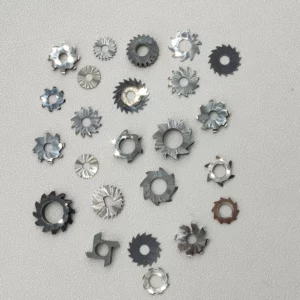Spis treści
Dźwignia kolankowaCarbide Tipped Saw Blade
Choosing the right carbide tipped saw blade is crucial for achieving accurate and efficient cutting results in a variety of materials. With so many options available in the market, it can be overwhelming to make the right choice. In this article, we will guide you through the process of selecting the perfect carbide tipped saw blade for your cutting needs, highlighting the key factors to consider and the benefits of each option.
The first step in choosing a carbide tipped saw blade is understanding your cutting needs and the material you will be working with. Carbide tipped saw blades are designed for cutting different materials such as wood, metal, plastic, and composite materials. Each material has unique properties that require specific blade characteristics to achieve optimal results.
For example, if you are working with wood, you will need a saw blade that has a high tooth count and a positive hook angle. This type of blade is designed to cut through the grain of wood with minimal tear-out and splintering. On the other hand, if you are cutting through metal, you will need a blade with fewer teeth and a negative hook angle to prevent the blade from grabbing and binding in the material.
Once you have determined the type of material you will be working with, consider the thickness of the material. Thicker materials require a blade with larger teeth and a more aggressive cutting pattern to ensure efficient cutting. Similarly, thinner materials require a blade with finer teeth to prevent damage or excessive removal of material.
The next factor to consider is the diameter of the saw blade. The diameter of the blade should be compatible with the size of your saw and the depth of cut you require. Choosing the right diameter is essential for maintaining stability and achieving precise cuts. A blade that is too small may not have enough cutting capacity, while a blade that is too large may cause unnecessary strain on your equipment.
Another important consideration is the type of carbide tips used in the saw blade. Carbide tips come in various grades, each with specific benefits and applications. For general purpose cutting, a standard carbide grade would suffice. However, if you are working with more abrasive materials or require extended blade life, a higher-grade carbide tip would be recommended.
Additionally, the design of the carbide tips can significantly impact the cutting performance. Different tooth profiles, such as alternate top bevel (ATB), triple-chip grind (TCG), and flat top grind (FTG), are engineered for specific cutting applications. ATB blades are ideal for cross-cutting wood, while TCG blades are better suited for cutting tough materials like laminate and melamine. FTG blades, on the other hand, excel at ripping cuts in hardwood.
It is also important to consider the number of teeth on the saw blade. More teeth result in a smoother, finer cut, while fewer teeth lead to a faster, more aggressive cut. The number of teeth required depends on the type of material and the desired finish. For instance, if you need a smooth, clean cut on a hardwood board, you would choose a saw blade with a high tooth count. Conversely, if you are cutting through thick metal, a blade with fewer teeth would be more suitable for fast and efficient cutting.
Beyond the technical considerations, it is worth examining the overall quality and durability of the carbide tipped saw blade. Look for blades that are manufactured with high-quality materials and precise manufacturing techniques to ensure longevity and performance. Additionally, consider factors such as noise reduction features, vibration control, and anti-kickback design for added safety and user comfort.
In conclusion, choosing the right carbide tipped saw blade for your cutting needs requires careful consideration of factors such as material type, thickness, diameter, carbide grade, tooth profile, and tooth count. Understanding the specific requirements of your cutting project and selecting a blade that is tailored to those needs is essential for achieving the best results. By taking the time to evaluate these factors and choosing a high-quality blade, you can ensure accurate and efficient cutting for years to come.
Whether you are a professional woodworker, a metal fabricator, or a DIY enthusiast, finding the right carbide tipped saw blade can make all the difference in your cutting projects. So, don’t compromise on quality or settle for subpar performance. Invest in a carbide tipped saw blade that is designed to meet your specific cutting needs and experience the difference it can make in your work.
